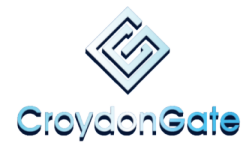10 Crucial Elements of an Engaging Business Website
A quality website is an excellent branding tool for a business, acting as the center of your operations. While you will have social media platforms to communicate with customers, you would typically direct people towards your main site. If, however, your website is not enticing or engaging, you can end up reducing interest in your brand. Using the following elements on your site can draw people into your business, providing trust and engagement.
Engaging Content
Engaging content is what will keep people active on your site and encourage them to return. For most business sites, a blog will be required to contain your content. Designers and other creative fields might get the most traffic to a portfolio page, though, and case studies can also be a draw.
Lead Magnet
A lead magnet will entice visitors to join your list, allowing you to continuously contact them. An effective lead magnet is usually a report, video series, software tool, or similar useful offering. Your lead magnet should be related to your main business, acting as the first step in a sales funnel.
User-Friendly Navigation
Navigation can make or break a website. If visitors struggle to find the content they require, they will almost certainly leave. Navigation simplifies the searching process, leading people towards the relevant pages. Most business sites will be relatively simple, so you don’t need to overcomplicate the navigation.
FAQ Page
An FAQ page contains all the common questions users ask, providing a useful resource to visitors. You can save time on customer service by leading people towards the FAQ page, while you may drive traffic if your site becomes the go-to source for common niche questions.
Images and Video
Images can enhance a website, helping to tell the story of your business and improving written content. If you run a store, for example, pictures of your location and employees encourage people to visit. Videos are also useful for visitors who are less inclined to consume articles.
SEO Optimization
SEO helps your content gain visibility in the search engines, but it also offers an excellent experience for users. Ensuring your page titles, content, and images are all optimized helps visitors find exactly what they are looking for. Creating logical category options and hierarchies makes navigating your site far easier.
Brand Story
Most visitors will know little about the business they are visiting. Providing details of your brand story helps build trust and makes your business more memorable. You could detail why you started the enterprise, what your values are, and information about your team members.
Contact Details
The appearance of contact information helps build trust, even if a visitor doesn’t want to get in touch. For customer support questions, installing a helpdesk can offer an organized approach. Being active in the comment section of your blog also shows you are accessible and willing to engage with visitors.
Call to Action
Many business websites feature details on the company and services but fail to include a call to action (CTA). Your CTA tells visitors what action they should take next, whether visiting your store, joining an email list, or calling you. Make sure to direct people to the next stage in the sales funnel through a visible CTA.
Trust Factors
Visitors need to trust you in order to buy your products or use your services. Adding trust factors can make people feel at ease, reducing any reservations they may be feeling. Trust factors can include visible security seals, reviews and testimonials from buyers, and recommendations from respected people in your industry.
Most business websites will have some of these elements already. Some sites, though, only list a few company details and never go further towards engaging visitors. There is so much competition for attention online that a mediocre website can irritate visitors, leading to a negative response to your brand. Simply including these elements in your design can radically alter the perception of your business, resulting in more sales. Ultimately, your website will represent your brand, so it is crucial that you make the experience count.







